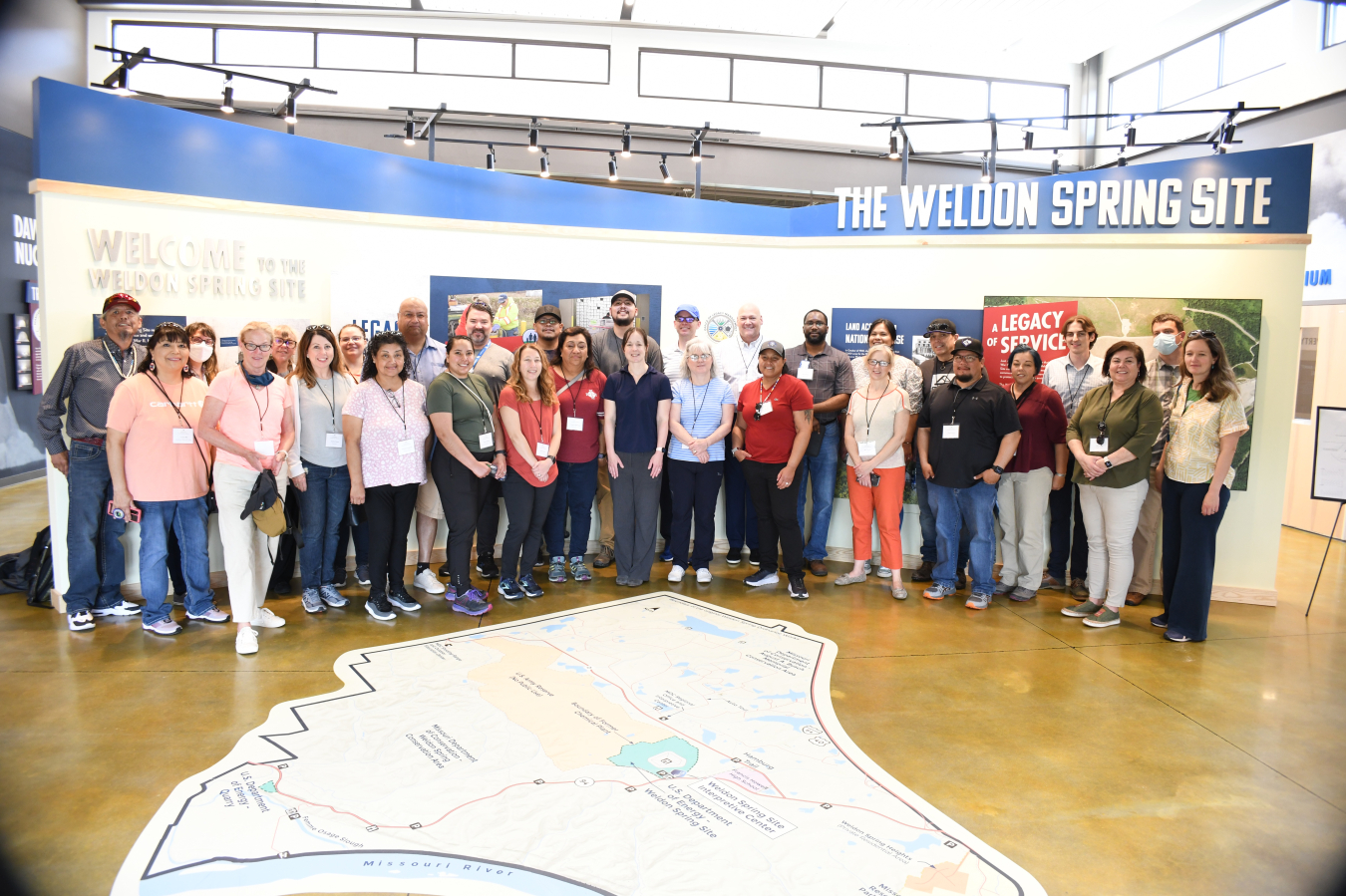STGWG toured the new interpretive center, disposal cell, and native prairie as they learned about LM’s work at Weldon, with STEM programming, and DOE’s National Lab Network.
May 10, 2022Weldon Spring Site Manager Rebecca Roberts gives a presentation to the group on Tuesday.
The U.S. Department of Energy (DOE) Office of Legacy Management (LM) hosted the State and Tribal Government Working Group (STGWG) Spring Meeting at LM’s Weldon Spring Site near St. Louis on May 10.
STGWG provides a national platform for states and Native American tribes affected by U.S. Department of Energy (DOE) sites and facilities associated with the production and cleanup of the nuclear weapons complex.
LM contractors Chelsie Crebs, left, and Eric Danielson, who are environmental scientists illustrating groundwater sampling methods.
LM’s mission is to protect human health and the environment through effective and efficient long-term surveillance and maintenance, and organizations like STGWG are key stakeholders in determining how LM carries out that mission across the DOE complex. STGWG was formed in 1989, when governors from 10 states wrote a letter to then Secretary of Energy James D. Watkins to express concerns regarding the management, cleanup, and disposal of radioactive and hazardous chemical wastes at DOE facilities within or adjacent to their state’s boundaries. As DOE shifted its mission from nuclear weapons production to cleanup, Watkins invited states, tribes, and national organizations to participate in a conference dealing with cleanup issues.
Through the working group, tribes and states provide expertise and share perspectives regarding the cleanup of DOE sites and facilities. More than 30 years later, STGWG has a strong track record of working with DOE to advance the critical mission of environmental cleanup across the DOE complex.
STGWG continues to focus on the three priorities of long-term stewardship (LTS), natural resource damage assessment and restoration (NRDAR), and tribal issues. STGWG tribes and states appreciate the participation by DOE officials from the offices of Environmental Management (EM), Legacy Management (LM), Nuclear Energy (NE), and the National Nuclear Security Administration (NNSA).
LM Weldon Spring Site Manager Rebecca Roberts gave a presentation on the history, remediation, and current long-term surveillance and maintenance efforts at the site before site interpreters provided guided tours of the newly opened exhibit hall and classrooms.
“We are honored to host the State and Tribal Government Working Group at the Weldon Spring Site as one of the first of many stakeholder groups to come learn about our site’s history and use our meeting space to convene and collaborate,” Roberts said.

After lunch, the group gathered to tour the outdoor features of the Weldon Spring Site, including the surrounding trails, the native prairie, and proposed site of an outdoor classroom. Site subject matter experts also provided a guided tour of the disposal cell and leachate collection and removal system.
The rest of the afternoon was spent learning about the National Lab Network and STEM with LM, a centralized outreach program created to communicate about the world-changing advancements of the nuclear age, cleanup, and ecological transformations at more than 100 sites across the United States and Puerto Rico.

